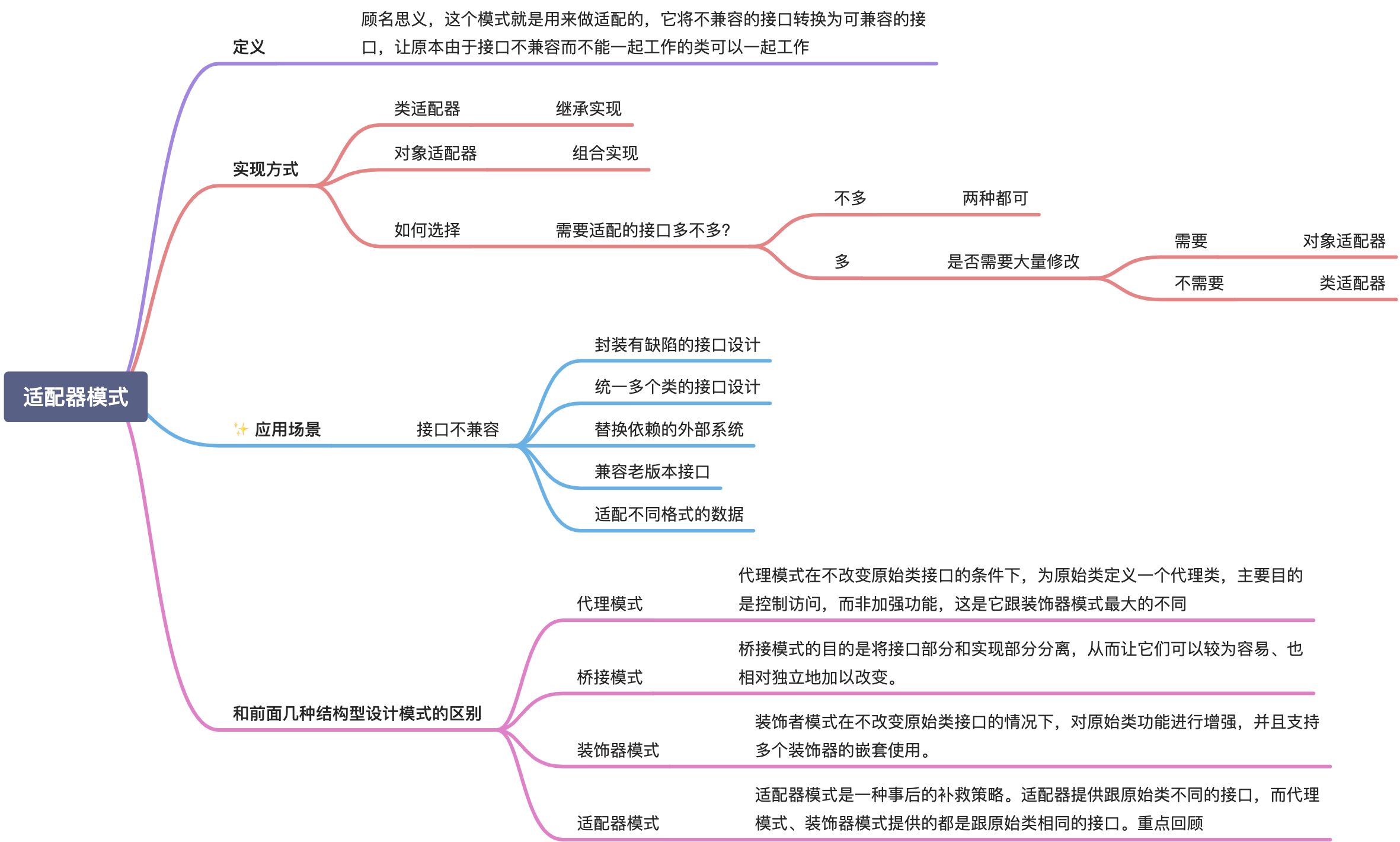Go设计模式09-适配器模式
注:本文已发布超过一年,请注意您所使用工具的相关版本是否适用
序
- Go 设计模式实现,包含常见的设计模式实现,同时这也是 极客时间-设计模式之美 的笔记,源课程采用 Java 实现,本系列会采用 Go 实现
- 课程: 51 | 适配器模式:代理、适配器、桥接、装饰,这四个模式有何区别?
- **本文代码仓库: https://github.com/mohuishou/go-design-pattern **🌟🌟🌟🌟🌟
- **RoadMap: 09/22 **持续更新中,预计一周更新 2 ~ 3 种设计模式,预计到 202010 月底前更新完成
- **获取更新: **Github、知乎、RSS、开发者头条**
笔记

代码实现
假设我现在有一个运维系统,需要分别调用阿里云和 AWS 的 SDK 创建主机,两个 SDK 提供的创建主机的接口不一致,此时就可以通过适配器模式,将两个接口统一。
PS:AWS 和 阿里云的接口纯属虚构,没有直接用原始的 SDK,只是举个例子
Code
1 | |
单元测试
1 | |
关注我获取更新
猜你喜欢
本博客所有文章除特别声明外,均采用 CC BY-SA 4.0 协议,转载请注明出处,禁止全文转载


